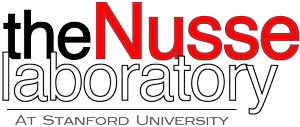Immunologic, virologic, and genetic aspects of mammary tumor virus-induced cell-surface antigens: presence of these antigens and the Thy 1.2 antigen on murine mammary gland and tumor cells.
Submitted by admin on Thu, 10/14/2010 - 22:44
| Title | Immunologic, virologic, and genetic aspects of mammary tumor virus-induced cell-surface antigens: presence of these antigens and the Thy 1.2 antigen on murine mammary gland and tumor cells. |
| Publication Type | Journal Article |
| Year of Publication | 1975 |
| Authors | Hilgers J, Haverman J, Nusse R, Van Blitterswijk WJ, Cleton FJ, Hageman PC, van Nie P, Calafat J |
| Journal | J Natl Cancer Inst |
| Volume | 54 |
| Pagination | 1323–1333 |
| Date Published | Jun |
| ISSN | 0027-8874 (Print); 0027-8874 (Linking) |
| Abstract | The distribution of the normal differentiation antigen Thy 1 and the mammary tumor virus (MTV)-induced antigens or antigen complexes MLm and MLr were studied in mouse mammary gland cells, mammary tumor cells, and other cell types, by use of ascites leukemia cells of the GR mouse strain as target cells in the cytotoxicity test. The Thy 1.2 antigen was detected by an AKR antiserum to C3Hf thymocytes. MLm was shown by a homologous C57BL antiserum to GRSL2 leukemia (absorbed in vivo in GR mice); MLr was detected by a rabbit heterologous antiserum (absorbed in vivo in C57BL or GR mice and in vitro with BALB/c milk) prepared against Tween 80- and ether-treated purified B particles. Sera from Sprague-Dawley rats bearing murine leukemia virus (MuLV)-producing syngeneic tumors were not cytotoxic or only slightly cytotoxic for GR leukemias transplanted in vivo, which indicated that MuLV-induced antigens were absent or present in very low quantity in such leukemias. The MLr and MLn antigens or antigen complexes were possibly identical to the mammary leukemia (ML) antigen, since they could be detected not only on GR but also on DBA/2 leukemia cells and since their distribution was exactly the same as that of MTV. Both the MLr and MLm antigens were present in purified B particles, and antigenic activity were present in purified B particles, and antigenic activity was enhanced by destruction of the purified virus particles. The antigens were about eightfold enriched in a preparation of B-particle envelopes, as shown by quantitative cytotoxicity absorption (CYTA) tests. Purified nucleoid fractions of B particles were only lightly positive for the antigen, probably due to envelope contamination. One dominant gene was responsible for the expression of MLr, as shown by CYTA tests with mammary glands of individual animals of segregating crosses between the GR strain with high mammary cancer incidence and strains with low incidence. This gene was closely linked with or was possibly identical to 1) the gene for cytoplasmic MTV gs antigen expression as seen by fixed cell immunofluorescence, and 2) the gene causing mammary tumors in the GR mouse strain. |
